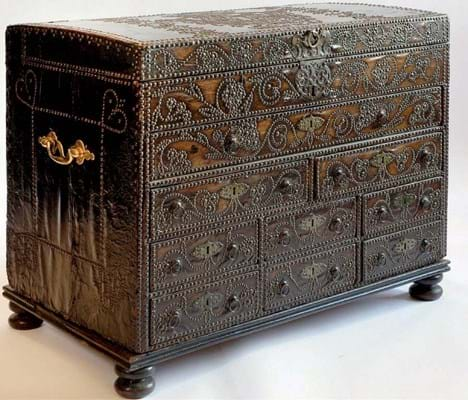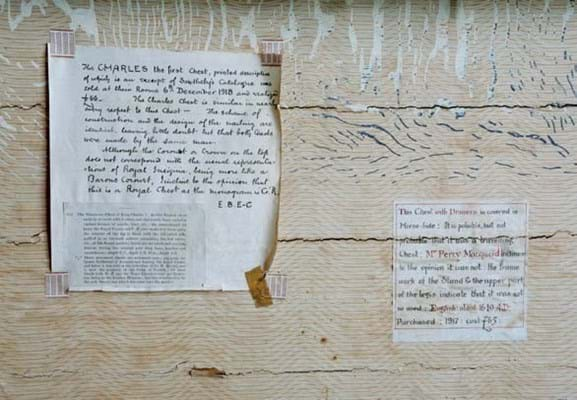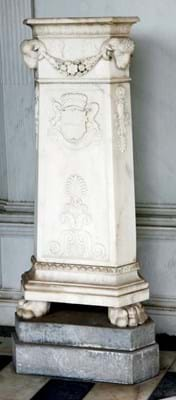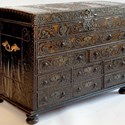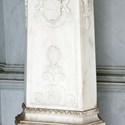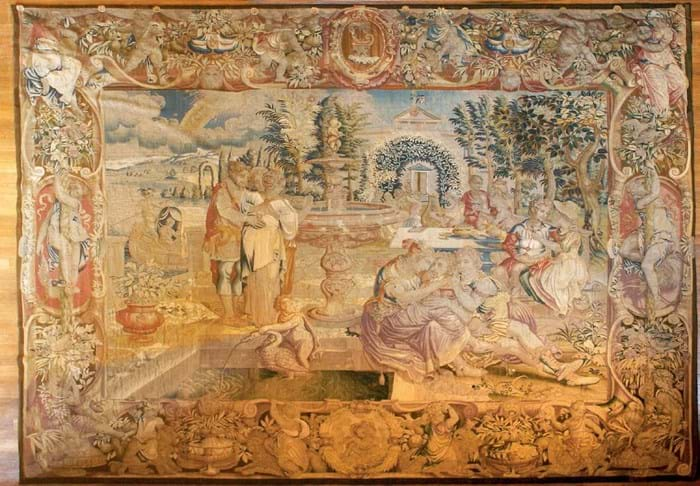As he said of the £1.75m record sale at Sworders (22% buyer’s premium) in Stansted Mounfitchet on April 17-18: “The total was achieved from about 575 lots at an average in excess of £5000 per lot – figures we may well not see again for some time.”
The Hertfordshire house, dating back to the 16th century, had been used by pharmaceutical giant GlaxoSmithKline as a corporate training centre. Security and other concerns made it more practical to sell the contents in the saleroom.
“A sale on the premises would have made for bigger view days but in the end, I don’t think it would have made much difference,” said Schooling. “As at all such sales, the general theme was best pieces making their money and dragging up prices of lesser items, sometimes by as much as four times what we could have expected.”
Market shifts
The sale highlighted interesting shifts in the market since a number of the major sellers from North Mymms last came under the hammer in 1979.
At that Christie’s event, the Middle Eastern buyer of the house paid nearly £300,000 to keep a collection of 16th-18th century North European tapestries with very impressive provenances on the walls of his new home.
This time around, the tapestries, offered in 20 lots, totalled around £750,000 – well short of the 1979 figure in real terms. Of particular interest was the different appeal of individual weavings.
The top-sellers were five mid-16th century Belgian tapestries on the theme of the Labours of Hercules to designs by Bernard van Orley. They had a provenance to the American financier and tapestry connoisseur JP Morgan: his sister Mary Burns lived at the house in the early 20th century.
When sold in 1979 these five monumental weavings had totalled £105,000, a figure reflected in their estimates at the Sworders sale. They took a hammer total of £392,000, all going to a leading London dealer.
The top-seller, at 12ft high x 17ft wide (3.66 x 5.18m), depicted a scene from Hercules’ capture of the Apples of the Hesperides with subsidiary background scenes, including Hercules’ capture of the Erymanthion Boar. Estimated at £20,000 (the sum it made in 1979), it sold at £120,000.
On the other hand, there was less enthusiasm for a series of six Flemish works of a similar period (with the same provenance) that told the story of Rome’s Egyptian campaigns, such as Julius Caesar and Cleopatra and the defeat of Mark Antony and Cleopatra at Actium.
The six works, with a collective top estimate of £72,000, totalled £81,000. The French dealer who bought them thus paid roughly the same sum they garnered in 1979 when (then a set of eight) they had totalled £110,000.
At the Christie’s sale a group of three mid-16th century Brussels tapestries from the History of Venus series after Bernard van Orley had sold at £46,000. Two of them were offered here catalogued as possibly from the workshop of Guasparo di Bartolommeo Papini after Alessandro Allori. That depicting the story of Venus and Diomedes, measuring 9ft 10in x 21ft 4in (3 x 6.5m), sold at £64,000.
The most dramatic fall in values was evident for an early to mid-18th century Brussels tapestry depicting a village kermesse. In April, the 10ft 4in x 17ft 10in (3.14 x 5.43m) tapestry after David Teniers II was given a broad £10,000-20,000 estimate but sold at £8000. Close to 40 years ago it had been bid to £28,000 – the section’s top price.
Furniture highlights
Much of the remaining contents had been acquired for the property by four different owners (two private, two corporate) subsequent to 1979.
The furniture was a mixed bag in terms of quality. One of Schooling’s favourite items was a George I pine domed-top muniment, or travelling chest, with a pine back covered in studded horsehide.
A baron’s coronet attested to its quality and, referencing Olivia Fryman’s Coffer-Makers to the Late Stuart Court, 1660-1714 (Furniture History Society, 2016), the cataloguer proffered the possibility that it was made by William Johnson who became royal coffer-maker in 1707.
The top estimate of £5000 was roughly in line with the £65 a buyer paid in 1917, according to one of the notes attached to the paper-lined interior, but the chest went to the London trade at £9000.
A mid-19th century satinwood side cabinet was exceptional quality – inlaid to the door with a spray of ribbon-tied musical instruments, scrolling foliage and geometric motifs.
It was estimated at up to £5000 and sold to the top end of the London trade at £20,000.
Retro resurgence
A major change since 1979 has been the acceptance of repro furniture.
“Today it’s all about the look,” said Schooling. “Sometimes we seem to be in the fashion industry as much as antiques.”
Examples at Stansted were 20th century dining chairs in 17th century style with high upholstered shaped backs which would have matched the North Mymms setting.
Two sets of 12 each estimated at £1000-1500 sold at £6000 and £4100 to a dealer and private buyer respectively.
The dining table in the same room, an early-19th century mahogany table extending to 15ft 10in (4.84m) with its five extra leaves, trebled the estimate at £10,400, going to a dealer presumably with a client in mind.
However, not everything could buck the general market trend. From a series of mahogany Pembroke tables to Charles II oak chests, much of the furniture at North Mymms could be had for less than £500.
Some of the garden furniture at North Mymms remained with the property but a group of Italian white marble furnishings from the loggia were sold. These good-quality grand tour pieces were eagerly contested by a series of London dealers.
A 19th century Istrian marble table, with a 6ft 9in x 3ft 7in (2 x 1.02m) top carved with a griffin on supports carved with winged lion monopedia, went at £20,000. An 18th century table with a 3ft 2in (97cm) diameter circular top on three carved lion monopedia made £12,000. Both doubled top estimates.
Earliest of the marble offerings was a 16th century, probably Italian, basin carved with a panel of griffins, urns, dolphins and scrolling foliage. Standing on a rose marble column, the 2ft 6in (75cm) diameter basin doubled mid-hopes at £8500.
Pedestals are top
The best-seller, by some way, would look as good in a modern penthouse as it did when made for an aristocrat’s country seat in c.1800.
This was the pair of 4ft 3in (1.30m) tall Roman-style white marble pedestals illustrated on the previous pages. They bore the arms for the Thynne family, probably Thomas, Viscount Weymouth, under the rams’ heads to each top corner and were decorated with scrolls, anthemia and a Vitruvian scrolled border.
Estimated at £10,000-15,000, the pedestals sold at £60,000.
For sporting and natural history art highlights from North Mymms Park, see Art Market.



